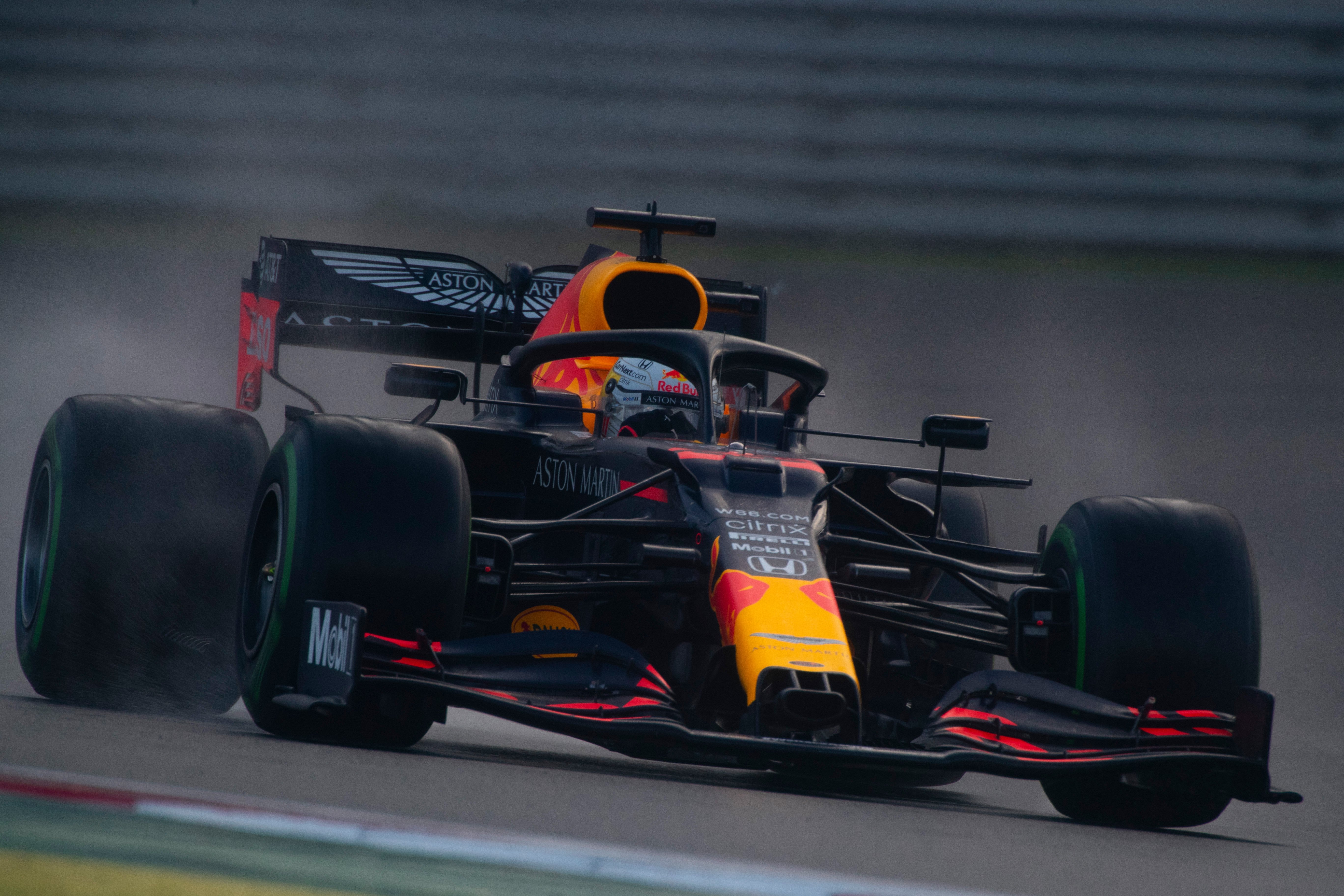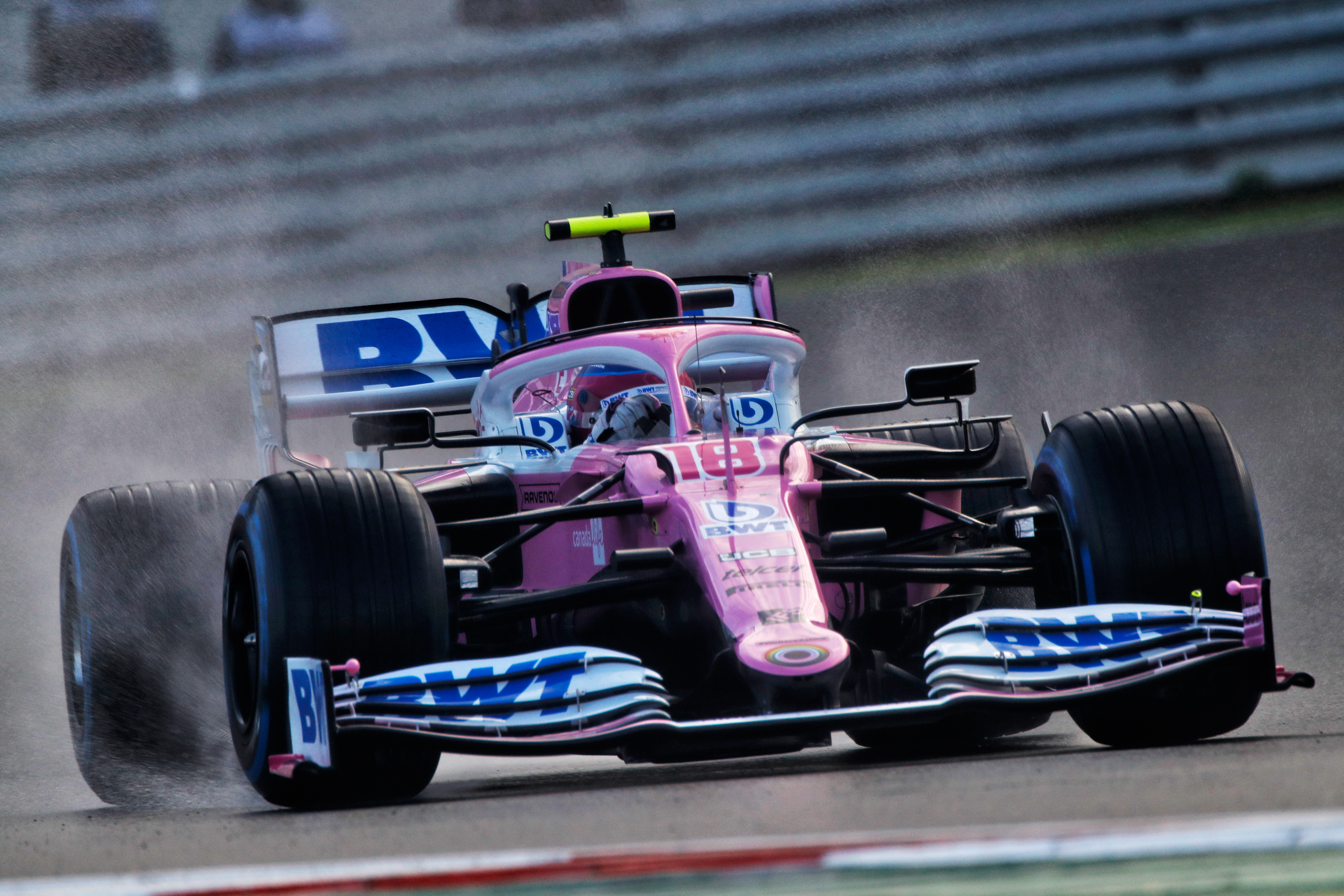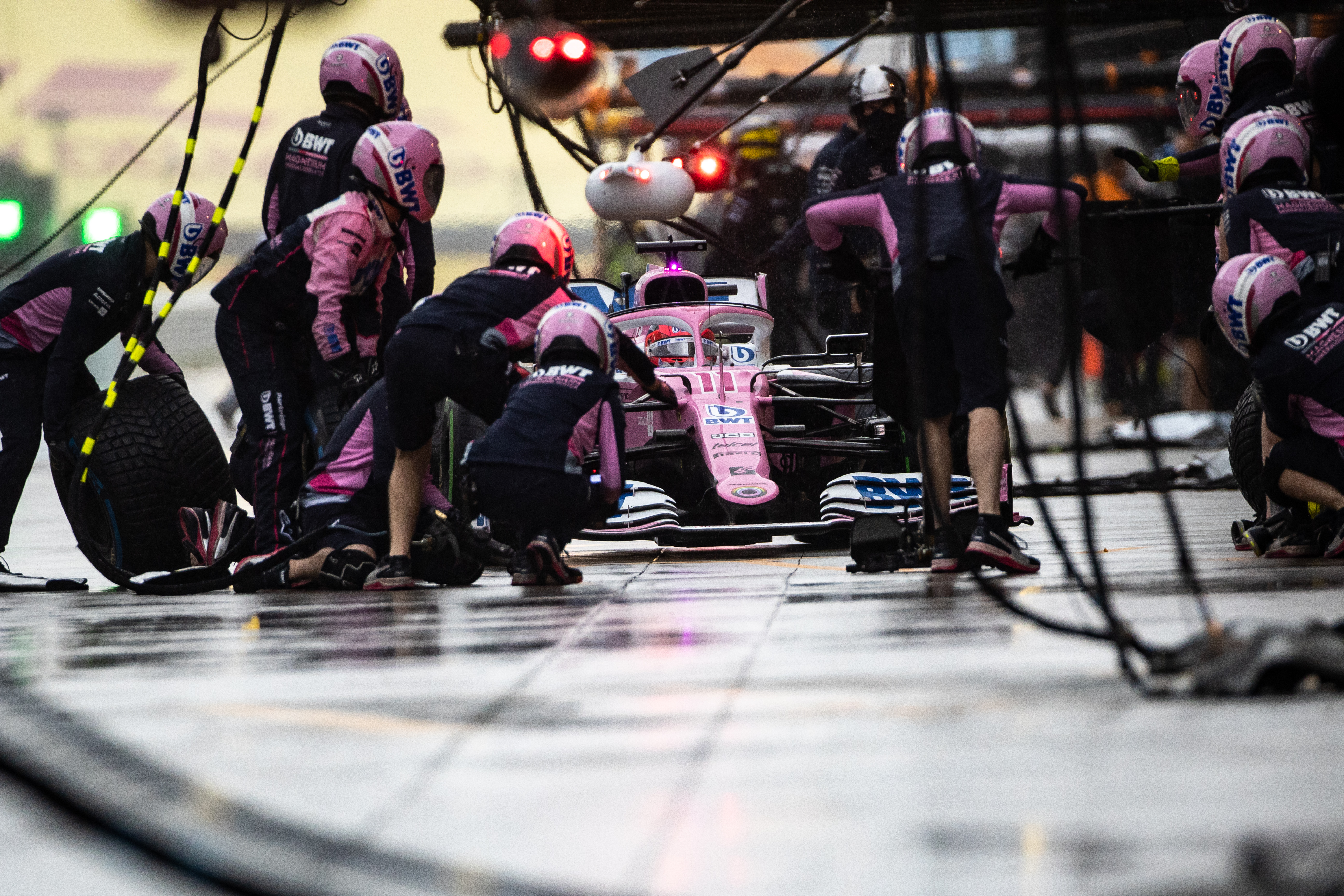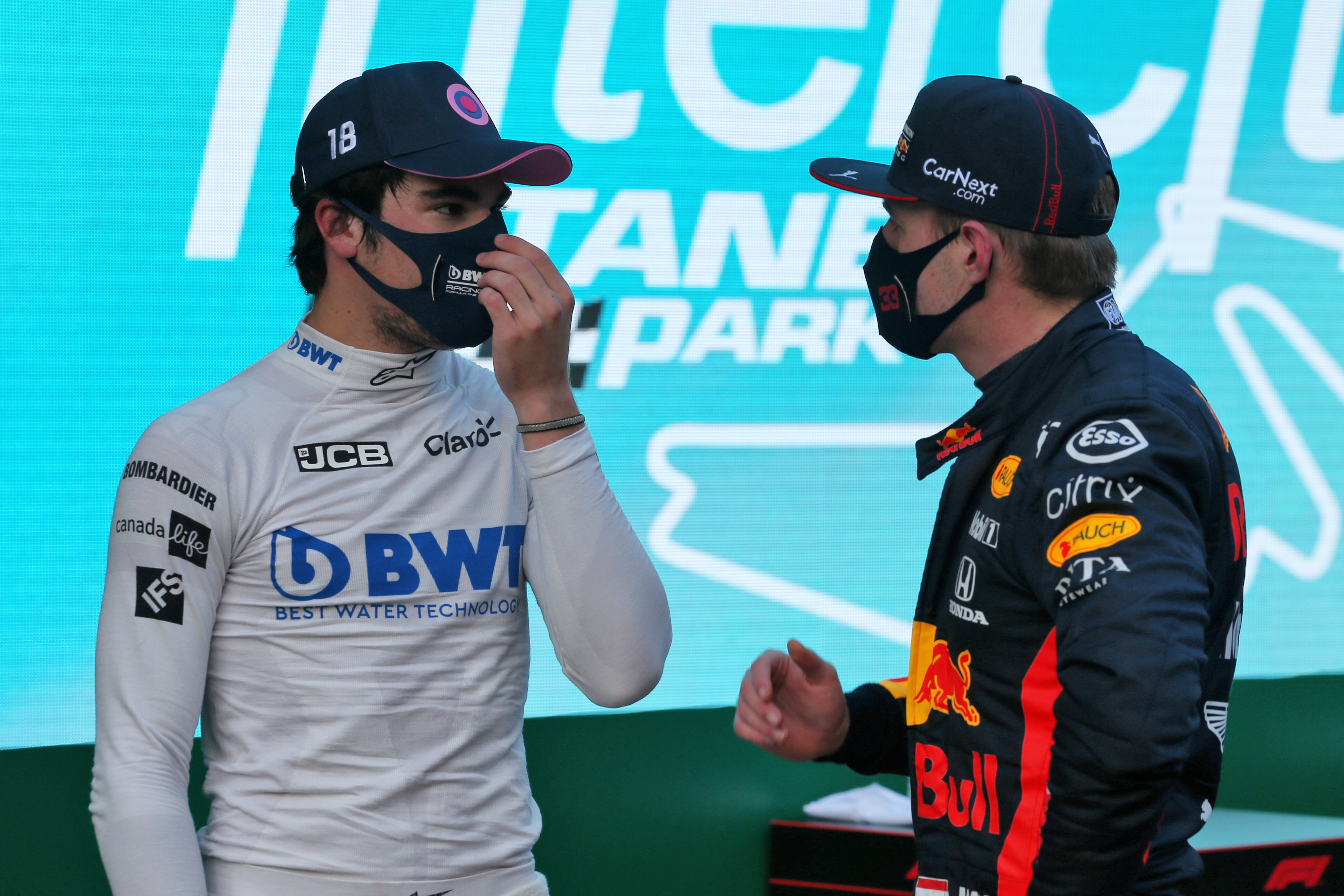Up Next

Until qualifying, the Red Bull RB16 was the quickest thing around a gripless and cool Istanbul Park.
Mercedes spent all weekend in vain trying to generate temperature on any tyre, so its threat was neutralised for once.
It was all there for Max Verstappen’s taking, surely.
But the RB16 had one crucial weakness; in a very specific changeover point between wet tyre and intermediates conditions, it took too long to switch on the inters.
Because Mercedes was neutralised, that wouldn’t ordinarily have mattered; but it did because there was another car which just loved that intermediate tyre – the Racing Point. So if at any point during qualifying that tricky crossover point of track conditions came, Red Bull was vulnerable to the pink cars.
Agonisingly for Verstappen, the track was at that exact place at the beginning of Q3. And so the man who’d headed every practice session and who’d been two seconds faster than anyone else in the full-wet conditions of Q2 was beaten to pole by Lance Stroll – by over half-a-second.
The warnings were there in the first part of Q1, where the track was at much the same place before the rain came down hard and brought out the first red flag.
That part-session had featured a variety of wet and inters. There was a window right at the beginning where the inter was pretty much as fast as the wet – but you needed to be able to get your flying lap in on it immediately. Because thereafter the track became too wet.
Both Racing Points and both Red Bulls had chosen it, (but Alex Albon came straight in for a switch to wets). Stroll and Sergio Perez went third and fifth quickest respectively. Verstappen could find no grip at all and was 15th at the point the session was red-flagged, over two seconds slower than Albon’s wet-tyred lap.
The Red Bull is generally less aggressive on its front tyres than other cars. Here, even after three laps, the front inters were still not up to temperature. But on the wets, which naturally generate temperature much easier because of the greater movement from the bigger tread blocks, it was dynamite, giving Verstappen all the messages he needed to deploy his stunning talent to the full.
His performance in Q2 – two seconds faster than second-fastest Albon, 2.5s faster than Lewis Hamilton, struggling for temperature even on the wets – was devastating.

By contrast, the Racing Points didn’t much like the wet tyre. “It just never felt nice on that tyre,” said Stroll.
The car was a little bit too pointy on it, didn’t give a comfortable feeling from the rear. Stroll and Perez graduated through in fourth and ninth respectively. But they knew that if the rain held off enough to make Q3 inters territory, they’d be in much better shape.
Already, by the end of Q2 the inter would probably have been feasible. There just wasn’t enough time to change onto it by the time the track became dry enough.
It was obvious the track was going to be becoming ever-quicker in Q3 and as such this was going to be another ‘fuelled-up and keep running’ session, not the conventional two runs.
Only Perez committed to the intermediate from the start – and the Racing Points joined the track last, the better to let the others at least clear the worst of the standing water away.
Looking back at the laps, Stroll’s was remarkably composed and error-free under the circumstances
Verstappen, out first and therefore with the track at it worst, but with good visibility, was by far the quickest of the wet-shod cars, continuing in his Q2 groove.
Stroll, benefitting from the dryer track of being out later, was next-quickest of the wet runners on everyone’s first lap but still 1.5s adrift.
Perez’s first inters lap put that all in perspective. He went quickest, 0.3s faster than Verstappen. In truth, it was done on a track that was probably more than 0.3s faster than it had been when Verstappen had done his lap. But it signalled that the track was coming into inters territory. Bad news for Red Bull.
By the time Perez had recorded that time Verstappen was taking whole chunks out of it on his second lap and would have been on a provisional pole had he completed the lap. But Red Bull called him (and Albon) in to swap the wets for inters.
It was essential that it did so. It knew that it took several laps to get the inter up to temperature, so it couldn’t afford the luxury of letting Verstappen complete his second wet-tyred lap, with the minutes of the session counting down.
The track was becoming whole seconds quicker by the lap, so pole was clearly going to be set on an inter. Maybe if Red Bull had committed to it from the start, like Perez, it would’ve been able to get the crucial temperature by the end.
“But I felt really comfortable on the extreme tyres,” said Verstappen later, “so I wasn’t sure.”

Stroll had made his own call for inters after setting that initial wet-shod lap, upon hearing from his engineer what time Perez had just done. Perez, meanwhile, was just trying to find a clear, error-free, lap to go even faster.
“Both myself and the team agreed that it was best to come in and fit inters,” said Stroll. “They were updating me on Sergio’s pace. Once I got on the inter, in these conditions, it’s important to generate temperature leaving the pit lane and push, lean on the tyre to generate temperature but that’s what I did.
“The first lap I had a Mercedes in front of me that spun, I still improved even with that. But that wasn’t good enough for pole and the second lap I had a pretty clear lap.”
Verstappen was aghast at how the Red Bull felt on the inters.
“No grip, no front grip,” he said. “Especially where there was a little bit more standing water I was struggling a lot. Through the fast corners it was all right.”
His first flyer on it was a tenth slower than he’d managed on that wet-shod lap.
He improved by a chunk next time, but not by anything like enough. When Perez eventually got his lap in, it was a full 1.3s faster. But a spin at Turn 7 then brought Sergio’s challenge to an end.
With the track still improving fast and time for one more flying lap, pole was surely still in reach for Verstappen. But that was to reckon without Stroll.
His previous lap had been slower than Verstappen’s – but only because Valtteri Bottas had spun in front of him. Stroll’s final lap was 0.59s faster than Verstappen’s.

Looking back at the laps, Stroll’s was remarkably composed and error-free under the circumstances. It included backing off for the yellows at Turn 7 for Perez’s spin. But he lost less time in doing that than Verstappen lost at the same corner with a big understeering moment after going in too deep, as those under-temperature fronts still refused to co-operate fully. He lost almost 0.5s right there.
Up to the final corner, Verstappen was still marginally ahead, but a bit more understeer into the final turn meant he got more wheelspin when putting the power down.
Stroll’s exit was beautifully clean. Ultimately, that was the difference. But it was all rooted in how the Red Bull just did not fire up those inters – and the Racing Point did.
“I’ve had some good wet performances in F1 but every day is different, every track is different, conditions are constantly changing. Even though it’s wet surfaces are changing. Things are always different,” said Stroll after qualifying.

“Through Q1, Q2, Q3, I felt like I was in a good position but again you don’t really know where you’re going to end up because it is so dependent on what tyre you’re on at the right time. That impacts the result massively.”
Verstappen might consider himself unlucky that the weather window exposing that trait came at the most awkward time possible. But Stroll, who is invariably quick in the wet – “As a kid I was driving on ice in our parking lot” – maximised those circumstances faultlessly.




